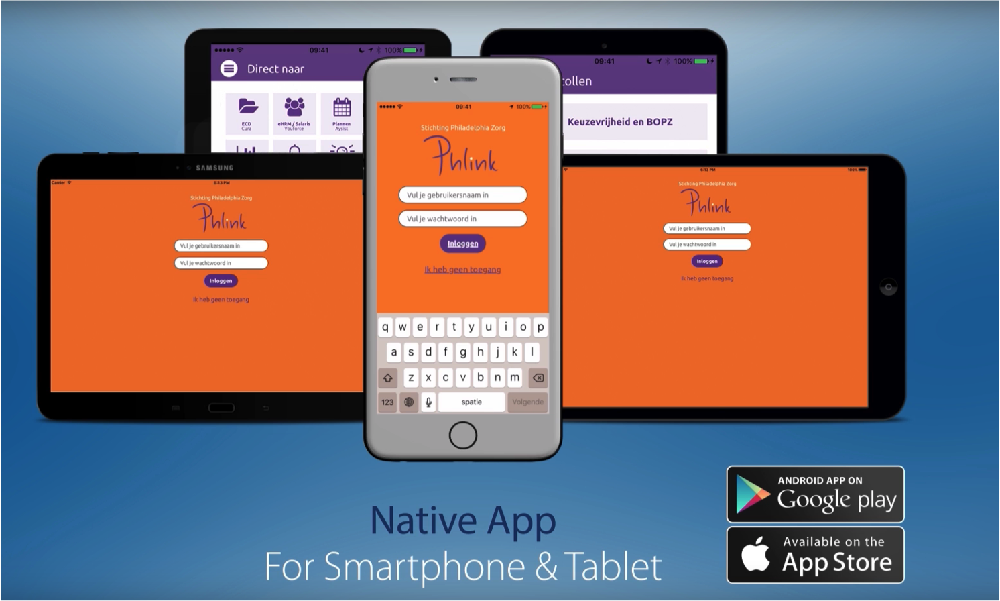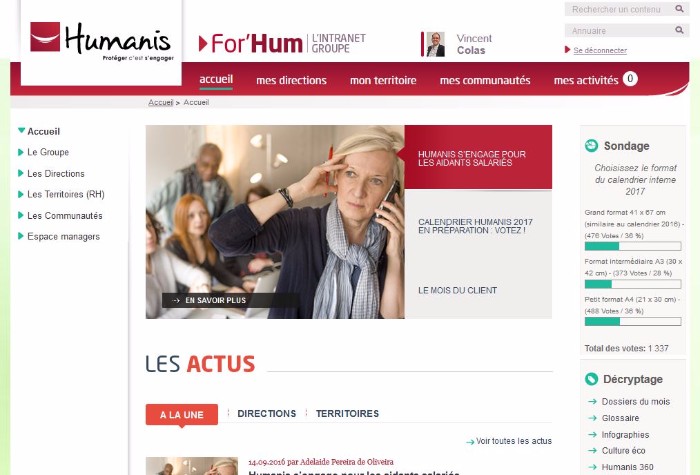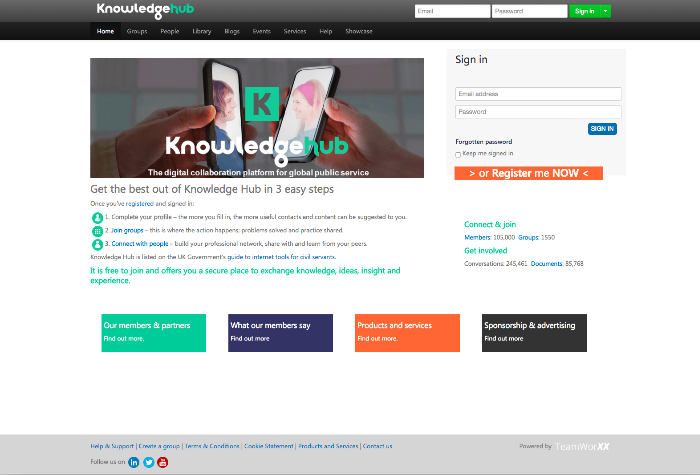Though most enterprises use some kind of intranet solution within their organizations, it is often overlooked as a part of the digital innovation that drives business today. As the main communication hubs for most companies, intranets are in the right spot to aide many parts of digital transformation. They can serve as a training site to equip your employees with new digital skills, or be a channel for communicating the cultural changes that digital transformation necessitates. Intranets can support a shift to a customer-centric mindset, and reinforce solutions for any hurdles that are more about people than technology.
Companies like Google have long used their intranets to manage internal programs that drive higher employee performance. By using intranets to help address common pain points of digital transformation, companies can offer more relevant tools to employees who are looking for new, better ways to get their work done in a digital context.
Pain Point #1: Serving Customers Better
Digital transformation is about how businesses are leveraging digital to change their business models in order to serve customers even better. Intranets play a significant role in a company's digital transformation strategy as an enhanced employee tool can direcly correlate to better customer service.
For example, the Philadelphia Care Foundation designed an intranet that enabled ambulatory employees to access business information regardless of location. This ensures that employees are able to provide the most effective and efficient care no matter where they are.

Pain Point #2: Streamlining Mergers and Acquisitions
As part of the digital shift, many companies are obtaining the capabilities they need through mergers and acquisitions. While this makes it easier to bring in much-needed digital talent, larger enterprises face complicated technical challenges, as well as cultural ones, in bringing together disparate business processes and systems.
The Humanis Group, for example, was created from a merger of three joint mutual social security groups: Vauban-Humanis, Aprionis and Novalis Taitbout. In order to ease the transition, the company centered communication and collaboration tools in its intranet. Creating a single point of collaboration allowed the three companies to move toward a shared company culture. Not only did this resolve the heterogeneity of IT systems they were bringing together, it also provided a way for employees to unite over the new company values: ambition, commitment and sharing.

Pain Point #3: From Intranet to Digital Workplace
As more work processes become digitized, intranets are starting to be known as digital workplaces: hubs of connected, digital tools that help employees get work done. The digital workplace automates common business processes, streamlines collaboration and is mobile-accessible for remote workers. Just about everyone is used to managing their lives with smartphones apps that are intuitive and enjoyable. Bringing these same user-friendly experiences into the workplace boosts employee satisfaction and improves retention, especially with those who can offer vital digital skills.
Though it’s not a traditional intranet, Knowledge Hub started as a collaboration site for local government in the UK, enabling workers to develop a consistent approach to enforcement in all areas of trading standards and environmental health. As its user base grew more tech savvy, Knowledge Hub incorporated mobile support and enhanced the social experience of the site, ensuring that the technology didn’t get in the way of users doing their jobs. This is the mark of a truly digital workplace — not jumping on every digital fad, but utilizing the affordability and availability of technology to help employees work faster and smarter.

Guide Your Employees Through Change
By making intranet solutions a key part of digital strategy, companies can ensure that their employees are supported throughout digital transformation. Productive change management is about open, frequent communication regarding new priorities, company values or experimental approaches to business problems. If you’re launching an intranet for the first time, taking the time to ask the right questions can ensure you’re building a site that provides real value to your employees.
Technology continues to disrupt familiar business methods, and it isn’t likely to stop anytime soon. Placing the customer at the center of everything is a good anchor for these constant changes, as it provides the right mindset for your team to manage priorities. The crucial — and often missing — element is to communicate this effectively across the organization, so that there can be unity as you move forward.
How to Build an Intranet That Boosts Productivity
Read the E-BookDécouvrez comment créer une solution adaptée à vos besoins
29 rue Taitbout
75009 Paris
France
+33 (0)1 84 21 11 80